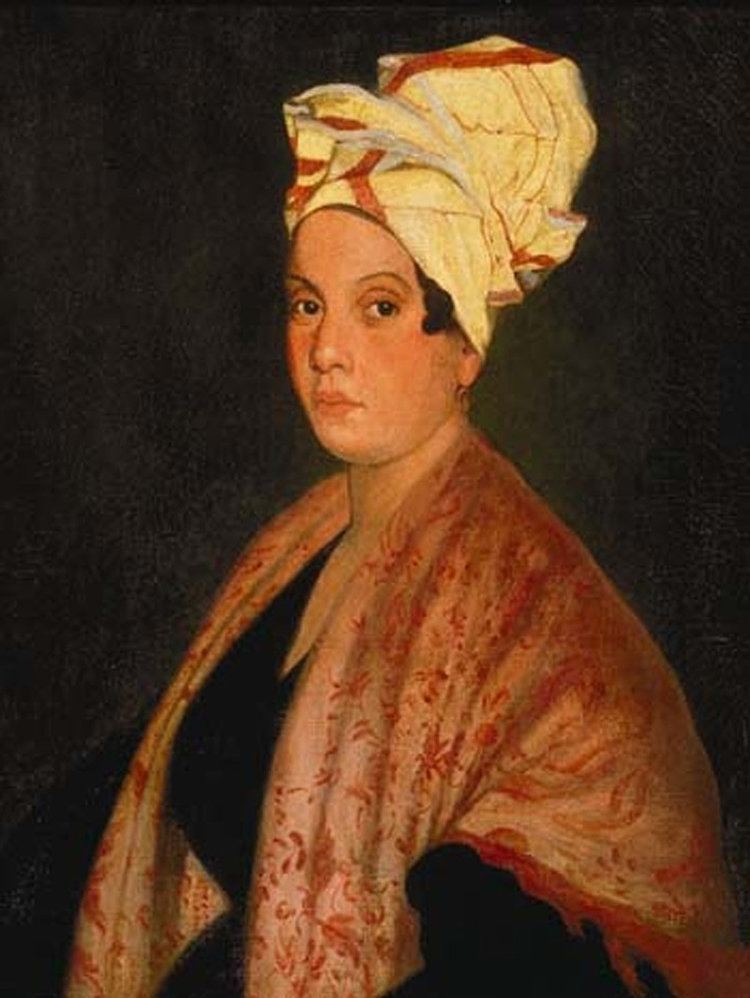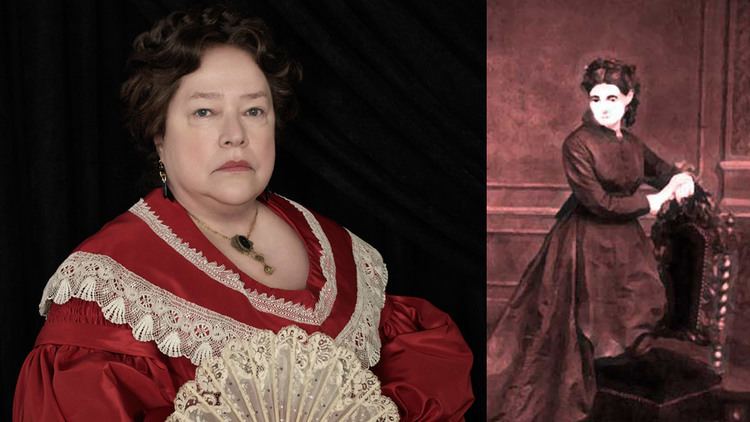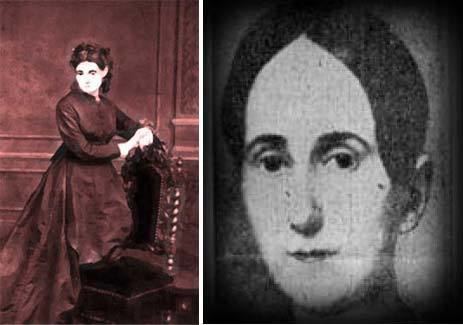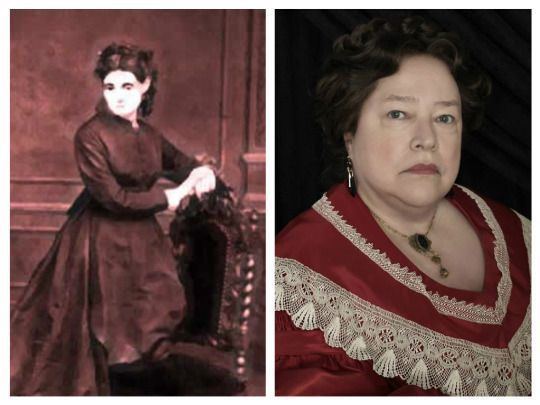Other names Madame LaLaurie Name Delphine LaLaurie | Religion Roman Catholicism | |
 | ||
Full Name Marie Delphine Macarty Children Marie Louise Pauline Blanque Spouse Leonard Nicolas (m. 1825–1849), Jean Blanque (m. 1808–1816), Ramon de Lopez (m. 1800–1804) Parents Barthelmy Louis Macarty, Marie Jeanne Lovable Similar People Marie Laveau, Kathy Bates, Elizabeth Bathory, Lizzie Borden, Ilse Koch | ||
Delphine lalaurie
Marie Delphine Macarty or MacCarthy (c. 1780 – 1849), more commonly known as Madame Blanque, until her third marriage and subsequent infamy remodeled her Madame LaLaurie, was a New Orleans Creole socialite and alleged serial killer, infamous for torturing and likely murdering her household slaves.
Contents
- Delphine lalaurie
- Delphine Lalauries Haunted Painting Its Dark History Documentary
- Early life and family history
- First marriage and death of husband
- Second marriage and death of husband
- Third marriage
- Torture and murder of slaves and 1834 LaLaurie mansion fire
- Escape from justice and self imposed exile in France
- Later life and death
- LaLaurie mansion
- LaLaurie in folklore
- In popular culture
- References

Born during the Spanish colonial period, Delphine Macarty married three times in Louisiana, having twice been widowed. She maintained her position in New Orleans society until April 10, 1834, when rescuers responded to a fire at her Royal Street mansion and discovered bound slaves in her attic who showed evidence of cruel, violent treatment over a long period. Lalaurie's house was subsequently sacked by an outraged mob of New Orleans citizens. She escaped to France with her family.

The mansion where LaLaurie lived is a landmark in the French Quarter, in part because of its history and in part because there were relatively few homes of such massive size in the Quarter.

Delphine Lalaurie's Haunted Painting & Its Dark History | Documentary
Early life and family history

Marie Delphine Macarty was born 1780, one of five children. Her father was Louis Barthelemy de McCarty, originally Chevalier de MacCarthy) whose father Barthelemy (de) MacCarthy brought the family to New Orleans from Ireland around 1730, during the French colonial period. (The Irish surname MacCarthy was shortened to Macarty or de Macarty.) Her mother was Marie-Jeanne L'Erable, also known as "the widow Le Comte", her marriage to Louis B. Macarty being her second. Both were prominent in the town's white Creole community. Delphine's Uncle, by marriage, Esteban Rodríguez Miró, was Governor of the Spanish American provinces of Louisiana and Florida during 1785–1791, and her cousin, Augustin de Macarty, was Mayor of New Orleans from 1815 to 1820.
First marriage and death of husband

On June 11, 1800, Mlle. Marie Delphine Macarty married Don Ramón de Lopez y Angulo, a Caballero de la Royal de Carlos, a high-ranking Spanish royal officer, at the Saint Louis Cathedral in New Orleans. Luisiana, as it was spelled in Spanish, had become a Spanish colony in the 1760s. In 1804, after the American acquisition, Don Ramón had been appointed to the position of consul general for Spain in the Territory of Orleans.

Also, in 1804, Delphine and Ramón Lopez traveled to Spain. Accounts of the trip vary. Grace King wrote in 1921 that the trip was Lopez's "military punishment" and that Señora Delphine Lopez met the Queen, who was impressed with Mrs. Lopez's beauty. Stanley Arthur's 1936 report differed; he stated that on March 26, 1804, Don Ramón Lopez was recalled to Spain "to take his place at court as befitting his new position," but that Lopez never arrived in Madrid because he died in en route, in Havana.
During the voyage, Delphine gave birth to a daughter, named Marie-Borja/Borgia Delphine Lopez y Angulo de la Candelaria, nicknamed Borquita. Delphine and her daughter returned to New Orleans afterwards.
Second marriage and death of husband

In June 1808, Delphine married Jean Blanque, a prominent banker, merchant, lawyer, and legislator. At the time of the marriage, Blanque purchased a house at 409 Royal Street in New Orleans for the family, which became known later as the Villa Blanque. Delphine had four more children by Blanque, named Marie Louise Pauline, Louise Marie Laure, Marie Louise Jeanne, and Jeanne Pierre Paulin Blanque. Blanque died in 1816.
Third marriage
Delphine married her third husband, physician Leonard Louis Nicolas LaLaurie, who was much younger than she, on June 25, 1825. In 1831, she bought property at 1140 Royal Street, which she managed in her own name with little involvement of her husband, and in 1832 had built a 2-story mansion there, complete with attached slave quarters. She lived there with her third husband and two of her daughters, and maintained a central position in New Orleans society.
Torture and murder of slaves and 1834 LaLaurie mansion fire
The LaLaurie maintained several black slaves in slave quarters, attached to the Royal Street mansion. Accounts of Delphine LaLaurie's treatment of her slaves between 1831 and 1834 are mixed. Harriet Martineau, writing in 1838 and recounting tales told to her by New Orleans residents during her 1836 visit, claimed LaLaurie's slaves were observed to be "singularly haggard and wretched;" however, in public appearances LaLaurie was seen to be generally polite to black people and solicitous of her slaves' health, and court records of the time showed that LaLaurie manumitted two of her own slaves (Jean Louis in 1819 and Devince in 1832). Nevertheless, Martineau reported that public rumors about LaLaurie's mistreatment of her slaves were sufficiently widespread that a local lawyer was dispatched to Royal Street to remind LaLaurie of the laws relevant to the upkeep of slaves. During this visit, the lawyer found no evidence of wrongdoing or mistreatment of slaves by LaLaurie.
Martineau also recounted other tales of LaLaurie's cruelty that were current among New Orleans residents in about 1836. She claimed that, subsequent to the visit of the local lawyer, one of LaLaurie's neighbors saw one of the LaLaurie's slaves, a twelve-year-old girl named Lia (or Leah), fall to her death from the roof of the Royal Street mansion while trying to avoid punishment from a whip-wielding Delphine LaLaurie. Lia had been brushing Delphine's hair when she hit a snag, causing Delphine to grab a whip and chase her. The body was subsequently buried on the mansion grounds. According to Martineau, this incident led to an investigation of the LaLauries, in which they were found guilty of illegal cruelty and forced to forfeit nine slaves. These nine slaves were then bought back by the LaLauries through the intermediary of one of their relatives, and returned to the Royal Street residences. Similarly, Martineau reported stories that LaLaurie kept her cook chained to the kitchen stove, and beat her daughters when they attempted to feed the slaves.
On April 10, 1834, a fire broke out in the LaLaurie residence on Royal Street, starting in the kitchen. When the police and fire marshals got there, they found a seventy-year-old woman, the cook, chained to the stove by her ankle. She later confessed to them that she had set the fire as a suicide attempt for fear of her punishment, being taken to the uppermost room, because she said that anyone who was taken there never came back. As reported in the New Orleans Bee of April 11, 1834, bystanders responding to the fire attempted to enter the slave quarters to ensure that everyone had been evacuated. Upon being refused the keys by the LaLauries, the bystanders broke down the doors to the slave quarters and found "seven slaves, more or less horribly mutilated ... suspended by the neck, with their limbs apparently stretched and torn from one extremity to the other", who claimed to have been imprisoned there for some months.
One of those who entered the premises was Judge Jean-Francois Canonge, who subsequently deposed to having found in the LaLaurie mansion, among others, a "negress ... wearing an iron collar" and "an old negro woman who had received a very deep wound on her head [who was] too weak to be able to walk." Canonge claimed, that when he questioned Madame LaLaurie's husband about the slaves, he was told in an insolent manner that "some people had better stay at home rather than come to others' houses to dictate laws and meddle with other people's business."
A version of this story circulating in 1836, recounted by Martineau, added that the slaves were emaciated, showed signs of being flayed with a whip, were bound in restrictive postures, and wore spiked iron collars which kept their heads in static positions.
When the discovery of the tortured slaves became widely known, a mob of local citizens attacked the LaLaurie residence and "demolished and destroyed everything upon which they could lay their hands". A sheriff and his officers were called upon to disperse the crowd, but by the time the mob left, the Royal Street property had sustained major damage, with "scarcely any thing [remaining] but the walls." The tortured slaves were taken to a local jail, where they were available for public viewing. The New Orleans Bee reported that by April 12 up to 4,000 people had attended to view the tortured slaves "to convince themselves of their sufferings."
The Pittsfield Sun, citing the New Orleans Advertiser and writing several weeks after the evacuation of LaLaurie's slave quarters, claimed that two of the slaves found in the LaLaurie mansion had died since their rescue, and added, "We understand ... that in digging the yard, bodies have been disinterred, and the condemned well [in the grounds of the mansion] having been uncovered, others, particularly that of a child, were found." These claims were repeated by Martineau in her 1838 book Retrospect of Western Travel, where she placed the number of unearthed bodies at two, including the child.
Escape from justice and self-imposed exile in France
Delphine LaLaurie's life after the 1834 fire is not well documented. Martineau wrote in 1838, that LaLaurie fled New Orleans during the mob violence that followed the fire, taking a coach to the waterfront and travelling, by schooner, from there to Mobile, Alabama and then on to Paris. Certainly by the time Martineau personally visited the Royal Street mansion in 1836 it was still unoccupied and badly damaged, with "gaping windows and empty walls".
Later life and death
The circumstances of her death are also unclear. George Washington Cable recounted in 1888, a then-popular but unsubstantiated story, that LaLaurie had died in France, in a boar-hunting accident. Whatever the truth, in the late 1930s, Eugene Backes, who served as sexton to St. Louis Cemetery #1 until 1924, discovered an old cracked, copper plate in Alley 4 of the cemetery. The inscription on the plate read "Madame LaLaurie, née Marie Delphine Maccarthy, décédée à Paris, le 7 Décembre, 1842, à l'âge de 6--."
According to the French archives of Paris, however, Marie Delphine Maccarthy died on December 7, 1849.
LaLaurie mansion
The New Orleans house occupied by Delphine LaLaurie at the time of the 1834 fires stands today at 1140 Royal Street, on the corner of Royal Street and Governor Nicholls Street (formerly known as Hospital Street). At three stories high, it was described in 1928 as "the highest building for squares around", with the result that "from the cupola on the roof one may look out over the Vieux Carré and see the Mississippi in its crescent before Jackson Square". The entrance to the building bears iron grillwork, and the door is carved with an image of "Phoebus in his chariot, and with wreaths of flowers and depending garlands in bas-relief". Inside, the vestibule is floored in black and white marble, and a curved mahogany-railed staircase runs the full three stories of the building. The second floor holds three large drawing rooms connected by ornamented sliding doors, whose walls are decorated with plaster rosettes, carved woodwork, black marble mantle pieces and fluted pilasters.
Subsequent to LaLaurie's departure from America, the house remained ruined at least until 1836, but at some point prior to 1888 it was "unrecognizably restored", and over the following decades was used as a public high school, a conservatory of music, a tenement, a refuge for young delinquents, a bar, a furniture store, and a luxury apartment building.
In April 2007, Nicolas Cage bought the LaLaurie House through Hancock Park Real Estate Company, LLC, for a sum of $3.45 million. The mortgage documents were arranged in such a way that Cage's name did not appear on them. On November 13, 2009, the property, then valued at $3.5 million, was listed for auction as a result of bank foreclosure and purchased by Regions Financial Corporation for $2.3 million.
LaLaurie in folklore
Narratives detailing Lalaurie's mistreatment of her slaves were widespread in Louisiana throughout the 19th century and featured in story collections by Henry Castellanos and George Washington Cable. It's important to differentiate Cable's work from his 1881 novel "Madame Delphine," as his account drew upon contemporary newspaper stories from publications like the New Orleans Bee and the Advertiser, as well as Martineau's 1838 work "Retrospect of Western Travel." However, Cable also incorporated his own synthetic elements, dialogues, and assumptions into the narrative.
After 1945, stories of the Lalaurie slaves became considerably more explicit. Jeanne deLavigne, writing in Ghost Stories of Old New Orleans (1946), alleged that Lalaurie had a "sadistic appetite [that] seemed never appeased until she had inflicted on one or more of her black servitors some hideous form of torture" and claimed that those who responded to the 1834 fire had found "male slaves, stark naked, chained to the wall, their eyes gouged out, their fingernails pulled off by the roots; others had their joints skinned and festering, great holes in their buttocks where the flesh had been sliced away, their ears hanging by shreds, their lips sewn together ... Intestines were pulled out and knotted around naked waists. There were holes in skulls, where a rough stick had been inserted to stir the brains." DeLavigne did not directly cite any sources for these claims, and they were not supported by the primary sources.
The story was further popularized and embellished in Journey Into Darkness: Ghosts and Vampires of New Orleans (1998) by Kalila Katherina Smith, the operator of a New Orleans ghost tour business. Smith's book added several more explicit details to the discoveries allegedly made by rescuers during the 1834 fire, including a "victim [who] obviously had her arms amputated and her skin peeled off in a circular pattern, making her look like a human caterpillar," and another who had had her limbs broken and reset "at odd angles so she resembled a human crab". Many of the new details in Smith's book were unsourced, while others were not supported by the sources given.
Today, modern re-tellings of the Lalaurie legend often use deLavigne and Smith's versions of the tale to found claims of explicit tortures, and to place the number of slaves who died under Lalaurie's care at as many as one hundred.
